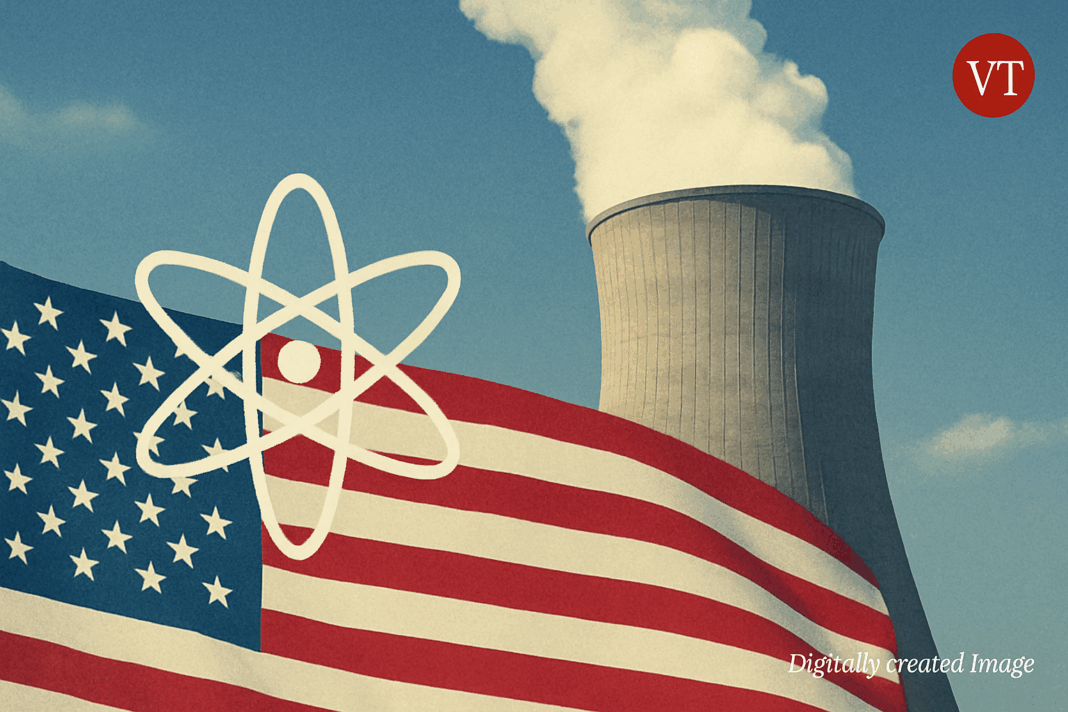Key Developments
- President Trump signs 3 executive orders targeting nuclear reform.
- DOE directed to fast-track reactor testing, build 3 pilot reactors by July 2026.
- NRC overhaul mandates faster licensing, modern radiation standards.
- Push to rebuild uranium supply chain and add 10 large reactors by 2030.
What’s New
President Donald J. Trump on Thursday unveiled a comprehensive plan to reboot the U.S. nuclear energy sector through three major executive orders. In particular, the directives target outdated regulatory barriers, promote domestic uranium production, and aim to double down on advanced reactor deployment by 2030.
Why It Matters
According to the White House, the initiative is intended to restore U.S. global leadership in nuclear innovation, improve energy security, and reduce reliance on foreign uranium suppliers. As a result, the administration argues that years of bureaucratic stagnation must be reversed to enable future growth.
Details
Reactor Testing Reform
The first executive order mandates the Department of Energy (DOE) to modernize its testing protocols. Specifically, it requires DOE to approve and deploy “qualified test reactors” within two years of receiving complete applications. Additionally, a pilot program will construct at least three advanced reactors outside national labs by July 4, 2026.
The order further calls for expedited environmental reviews under the National Environmental Policy Act (NEPA), while maintaining safety standards.
NRC Overhaul
A second order tasks the Nuclear Regulatory Commission (NRC) with overhauling its regulatory framework. To ensure efficiency, new reactor licensing must be completed within 18 months, while license renewals are capped at 12 months.
Moreover, the NRC is directed to reconsider its use of the linear no-threshold (LNT) radiation model and implement science-based thresholds in consultation with the DOE, Department of Defense, and Environmental Protection Agency.
Rebuilding the Industrial Base
The third executive order addresses weaknesses in the domestic uranium fuel cycle. It directs the DOE to develop a national plan for managing spent nuclear fuel and expanding production of low-enriched (LEU), high-assay low-enriched (HALEU), and high-enriched uranium (HEU).
In support of this directive, the order prioritizes funding to restart closed nuclear plants, complete stalled reactor projects, and build new large-scale advanced reactors. The administration’s target is 5 GW of additional capacity through uprates and at least 10 new large reactors by 2030.
Expert Quote
Flashback
The Idaho National Laboratory, a key federal testing site, has not constructed a new nuclear reactor since the 1970s. Critics of past policies have pointed to regulatory red tape as the cause of this prolonged stagnation.
Outlook
The White House estimates nuclear capacity could grow from 100 to 400 gigawatts by 2050 under the new reforms. Nevertheless, environmental groups have expressed concern over the easing of NEPA requirements, warning of potential safety risks. Therefore, the ultimate success of this initiative will depend on interagency coordination, congressional appropriations, and industry investment.
A global media for the latest news, entertainment, music fashion, and more.















